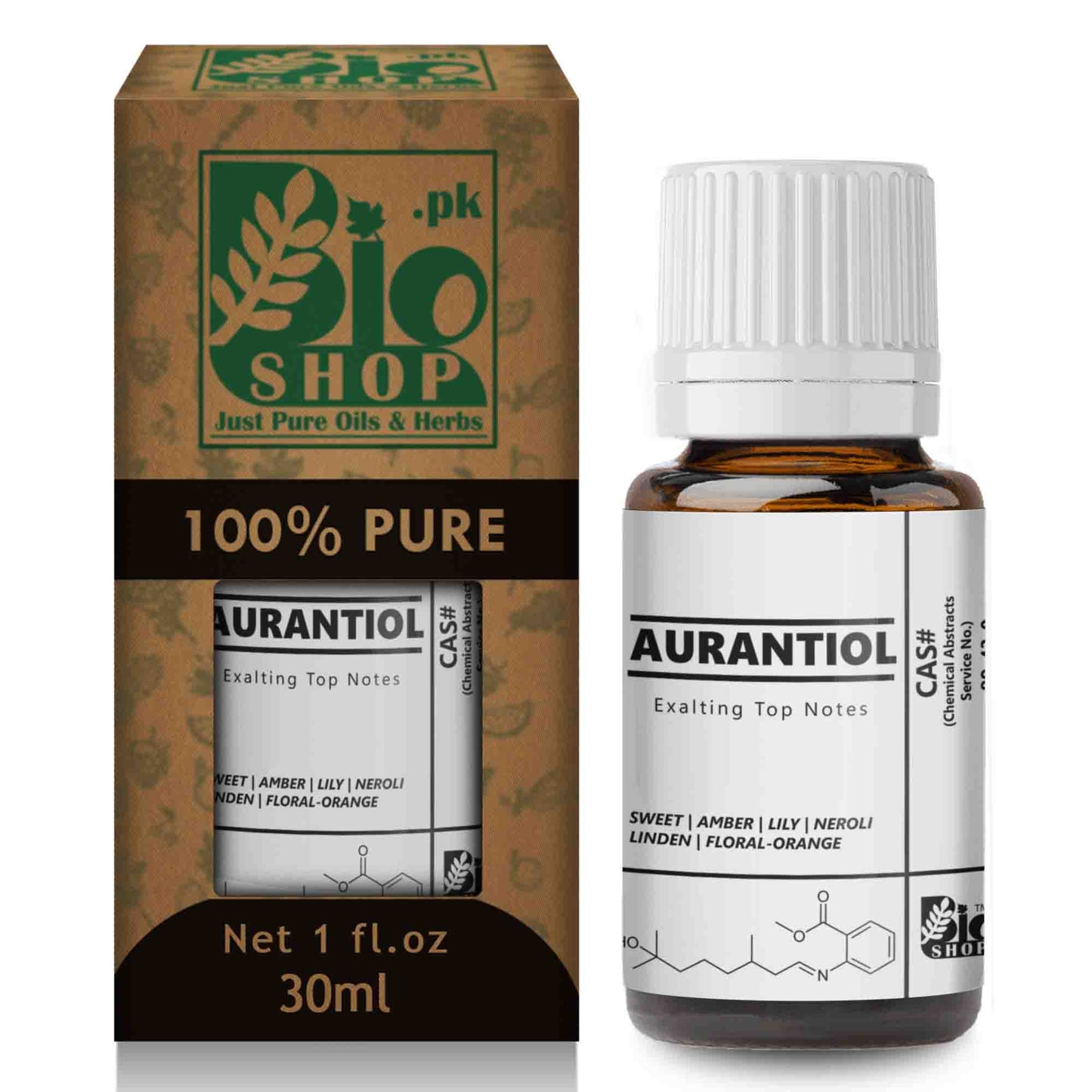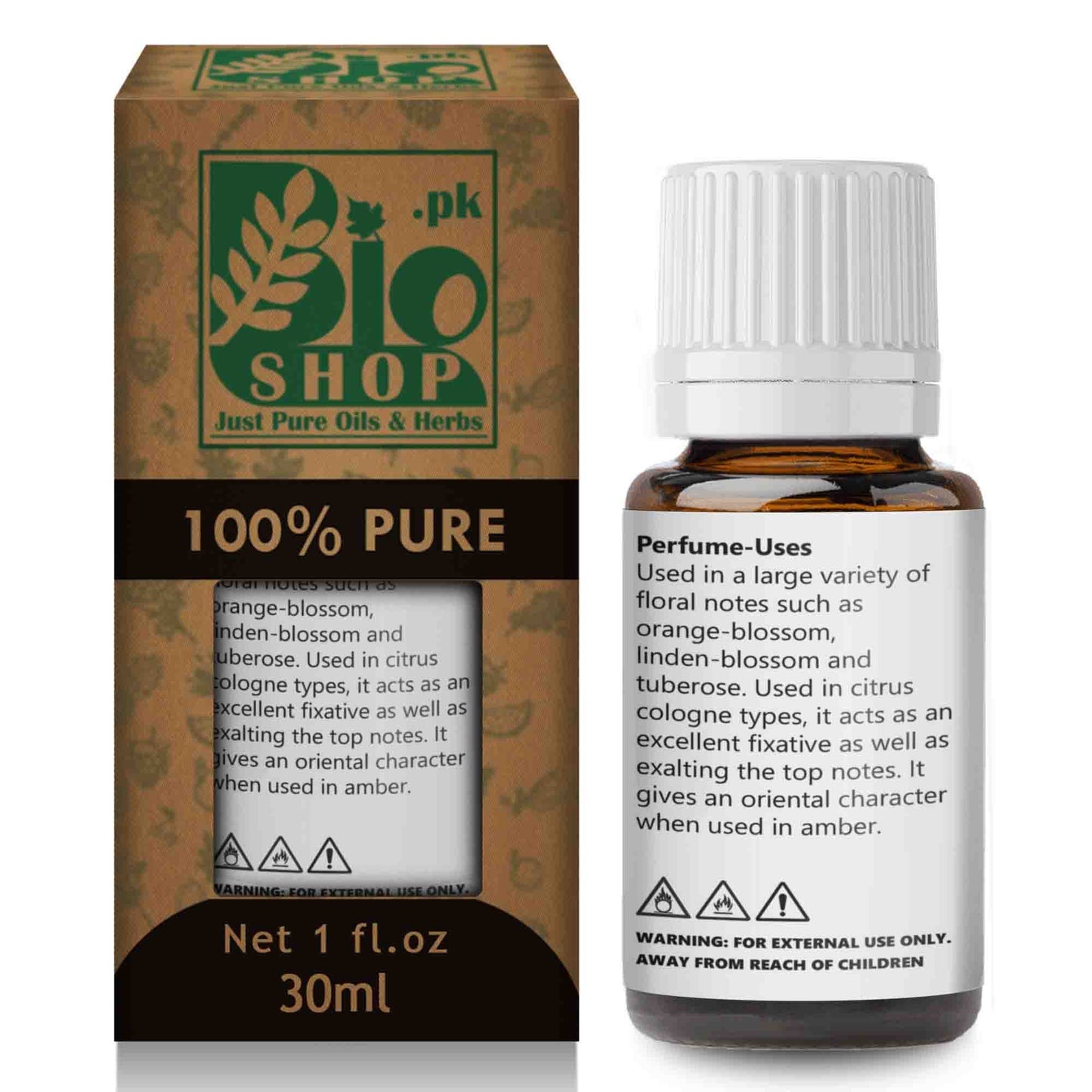Bio Shop
Aurantiol
Aurantiol
Olfactory Notes: Orange Blossom · Honeyed · Floral · Sweet · Neroli · Jasmine-like · Musky
Couldn't load pickup availability


Explore
Information About Aurantiol
Key Features
- Complex orange-floral base with honey and neroli-jasmine nuance
- Adds richness and depth to heart notes in white florals, orientals, and musks
- Ideal for romantic florals, traditional attars, and luxury feminine perfumes
- Offers strong longevity and elegant sillage
- Works well in roll-ons, oil perfumes, solids, and alcohol-based sprays
About Aurantiol
Aurantiol is a luxurious orange-floral aroma compound, known for its deep, sweet, honeyed orange blossom scent, with nuances of neroli, jasmine, and a soft musky warmth. Created by combining hydroxycitronellal and methyl anthranilate, Aurantiol brings depth, elegance, and sensuality to floral heart notes—especially in white floral, oriental, and musky compositions.
It's one of the most iconic and rich floral bases in perfumery, ideal for both traditional attars and modern fine fragrances.
Technical Data
INCI Name: Aurantiol
CAS Number: 63500-19-2
Molecular Formula: C17H27NO3
Appearance: Yellow to amber viscous liquid
Odor Description: Sweet orange blossom, floral, neroli-jasmine, honeyed
Purity: 98%+
Boiling Point: ~335°C
Flash Point: ~140°C
Density: ~1.01 g/cm³
Solubility: Soluble in alcohol, oils, and DPG
Recommended Usage Level: 0.1%–5% in final concentrate
Category: Floral-Oriental Base – Heart Note – Perfumery Use
Application Tips
Use 1–4% to add honeyed floral depth and sensuality to your floral or musky perfumes.
Pro Tip
💡 To craft a deep, sensual floral heart 🌼🍯, use 1–4% Aurantiol in oil-based perfumes, attars, or floral mists.
🌸 Blend with jasmine, orange blossom, or ylang-ylang for rich white florals.
🧴 Add to vanillin, heliotropin, or musk for sweet musky drydowns.
🌿 Pair with neroli, coumarin, or aldehydes for vintage-style florientals.
🔄 Allow the blend to age 5–10 days—Aurantiol develops beautifully with time.
⚠️ Very long-lasting—ideal for luxurious feminine or floral-amber compositions.
FAQ
Q1: What does Aurantiol smell like?
It smells like sweet orange blossom, with honey, neroli, jasmine, and a soft floral-musky base—deep and elegant.
Q2: Is it natural or synthetic?
It is a synthetic aroma compound, created by reacting hydroxycitronellal and methyl anthranilate—both used widely in perfumery.
Q3: Can it be used in oil-based perfumes or attars?
Yes! Aurantiol is fully soluble in DPG, carrier oils, and alcohol, making it perfect for roll-ons, attars, solids, and mists.
Q4: What types of perfumes benefit from it?
Ideal for white florals, orientals, florientals, romantic musks, and traditional blends.
Q5: What does it blend well with?
Best with jasmine, neroli, ylang-ylang, heliotropin, vanillin, coumarin, musks, and benzoin.
Documentation
Upon request, we will provide.
Where Can You Safely Use Aurantiol?
Discover how Aurantiol performs across different applications—rated for safety, stability, and effectiveness.



